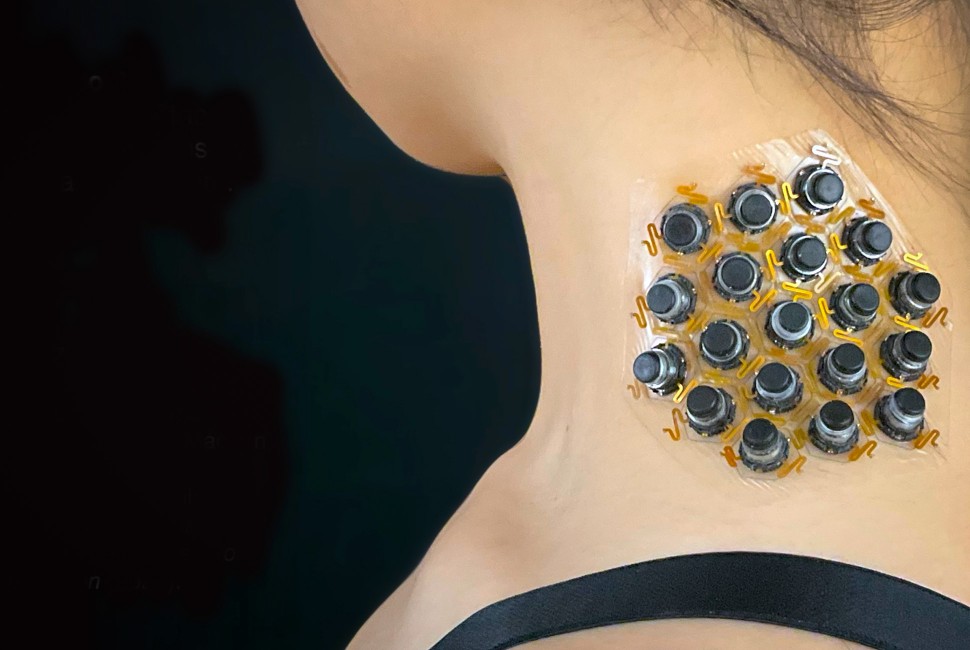A Northwestern University-led team of engineers has developed a new type of wearable device that stimulates skin to deliver various complex sensations.
Why this matters
The thin, flexible device gently adheres to the skin, providing more realistic and immersive sensory experiences. Although the new device obviously lends itself to gaming and virtual reality (VR), the researchers also envision applications in healthcare. For example, the device could help people with visual impairments “feel” their surroundings or give feedback to people with prosthetic limbs.
Building on ‘epidermal VR’
The device is the latest advance in wearable technology from Northwestern bioelectronics pioneer John A. Rogers. The new study, published in the journal Nature, builds on work published in 2019 in which his team introduced “epidermal VR,” a skin-interfaced system that communicates touch through an array of miniature vibrating actuators across large areas of the skin, with fast wireless control.
“Our new miniaturized actuators for the skin are far more capable than the simple ‘buzzers’ that we used as demonstration vehicles in our original 2019 paper,” Rogers said. “Specifically, these tiny devices can deliver controlled forces across a range of frequencies, providing constant force without continuous application of power. An additional version allows the same actuators to provide a gentle twisting motion at the surface of the skin to complement the ability to deliver vertical force, adding realism to the sensations.”
The device could help people with visual impairments “feel” their surroundings or give feedback to people with prosthetic limbs.
Rogers is the Louis A. Simpson and Kimberly Querrey Professor of Materials Science and Engineering, Biomedical Engineering and Neurological Surgery, with appointments in Northwestern’s McCormick School of Engineering and Northwestern University Feinberg School of Medicine. He also directs the Querrey Simpson Institute for Bioelectronics.
Rogers co-led the work with Northwestern’s Yonggang Huang, the Jan and Marcia Achenbach Professorship in Mechanical Engineering at McCormick; Hanqing Jiang of Westlake University in China; and Zhaoqian Xie of Dalian University of Technology in China. Jiang’s team built the small modifying structures needed to enable twisting motions.
Leveraging skin-stored energy
The new device comprises a hexagonal array of 19 small magnetic actuators encapsulated within a thin, flexible silicone-mesh material. Each actuator can deliver different sensations, including pressure, vibration and twisting. Using Bluetooth technology in a smartphone, the device receives data about a person’s surroundings for translation into tactile feedback — substituting one sensation (like vision) for another (touch).
Although the device is powered by a small battery, it saves energy using a clever “bistable” design. This means it can stay in two stable positions without needing constant energy input. When the actuators press down, it stores energy in the skin and in the device’s internal structure. When the actuators push back up, the device uses the small amount of energy to release the stored energy. So, the device only uses energy when the actuators change position. With this energy-efficient design, the device can operate for longer periods of time on a single battery charge.



